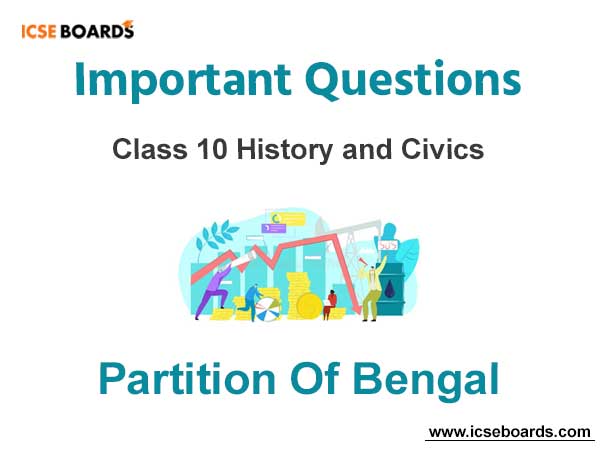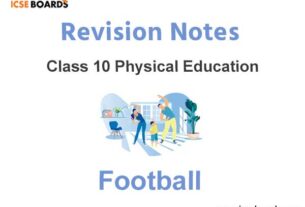Students of ICSE Class 10 should refer to Partition of Bengal ICSE Class 10 Questions and answers below which have come in past board exams. You should always go through questions which have come in previous years so that you can understand the pattern of questions in ICSE Class 10 History and prepare accordingly. This will help you to get better marks in ICSE Class 10 Board Exams
ICSE Class 10 Partition of Bengal Questions and Answers
Please refer to solved questions for chapter Partition of Bengal provided below. These questions and answers are expected to come in the examinations. Students should learn these so that they are able to answer the questions properly in exams and get good marks. Refer to Important Questions for ICSE Class 10 History and Civics for all chapters on our website.
Partition of Bengal Questions and Answers
Notes for Partition of Bengal
• Lord Curzon Became the Viceroy of India in 1898.
• He was enemy of Indian nationalism.
• He partitioned Bengal into two parts in 1905.
Causes/Motives
• He said Bengal is big state and hard to administrated it.
• It has large population about of 8 crores.
• Dacca was made its capital.
• The main cause to curb nationalism.
• The Hindus and Muslims were united and he wanted to divide them.
• This motive appears to be real one because new state was Muslim dominated
The Swadeshi an The Boycott Movements
• To curb Indian Nationalism Curzon introduced many acts and partitioned Bengal.
• It led widespread agitation.
• It came to be known as Swadeshi and Boycott Movement.
• The aim movements was to accelerate the pace of freedom movement, to promote Indian Industries , to provide employment to craftsmen etc.
• It was started in Bengal.
• All sections of Indians regardless age, religion, profession joined it.
• A meeting was held in town hall Calcutta in August 1905 in which large gathering of people participated.
• The day of partition is called a day of national mourning.
• There was a general Hratal.
• People Fasted.
• The Hindus and Muslims tied rakhi on one another’s wrists as a symbol of brotherhood.
• These movement started in Bengal but soon I reached in Punjab , Maharashtra and other parts of India.
• Congress took an aggressive part to progress Swadeshi movement.
• Tagore, B C Pal were leading leaders in Bengal and Lajpat Rai and Tilak in northern and Western India.
• Many meetings were organized.
• Large Sums were collected to help these movement.
• Even sanyasis joined it.
• Students took part.
• Many textile mills, soap and match factories , National banks were set up to help the people.
• To suppress many policies were followed by the government such as Leaders were beaten and killed , arrested .
• In 1907 Lal Lajpat Rai was arrested.
• In 1908 Tilak was sentenced to 6 years imprisonment.
• Grant-in-aid to educational institutions were stopped.
• Government followed divide and rule.
Impact and Significance of these Movements
• The use of India made goods replaced use of foreign goods.
• The increased demands of Swadeshi goods led to increase in production of goods which encouraged local industries.
• The movement was beneficial for cottage industries which provided work to craftsman.
• It created great enthusiasm among students as a result they burnt foreign goods.
• It encouraged National literature and nationalism.
• This movement was nationwide and inspiring national feelings in Indians.
• The Surat Split, 1907
• The Early Nationalist controlled congress with their methods and ideals.
• They were Loyal to British.
• They were not changed their method of working after the partition of Bengal.
• Some leaders like Tilak, Lala Lajpat Rai wanted passive resistance against British.
• Early nationalist were not ready.
• The congress passed resolution on Swaraj , Swadesh , Boycott Movement under the pressure of assertive nationalist and it accepted by Early nationalist in 1906 at Calcutta.
• In 1907, Surat Early nationalist denied resolutions passed in 1907.
• There were clashed between the two groups.
• Police restore peace.
• In this situation congress was divided in two groups.



